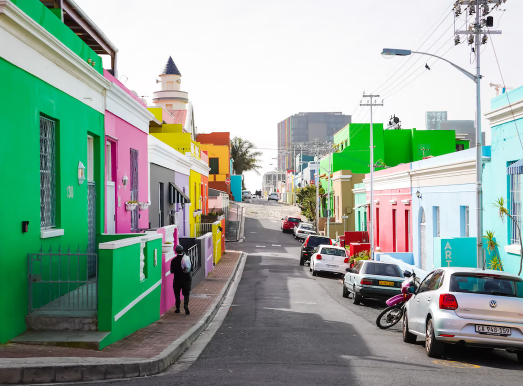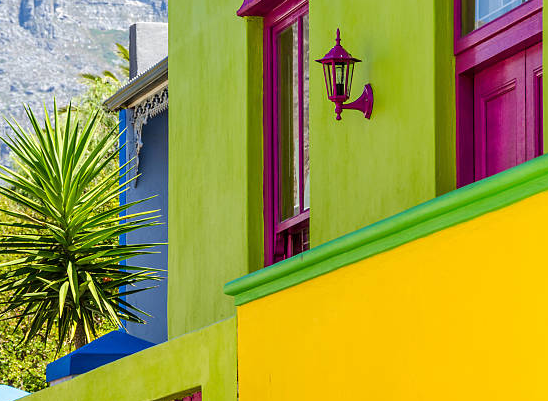Melodious voices echoed in Bo-Kaap. Dressed in flowing robes, people walked down the cobblestone road to the Owar Mosque to greet each other. South Africa’s oldest mosque towers between Cape Town city centre and Signal Hill. Just a few blocks from the neon lights of Long Street, the prayers of azaan or Islam sound five times a day. Religion is the defining feature of the neighborhood’s identity. But what attracts people from all over the world are hearty meals, a welcoming community spirit, and brightly colored houses.

Built in the 1700s, the Malay Quarter was Cape Town’s first suburb and home to laborers from the area we now call Indonesia. Although they were stripped of their names and history upon arrival, their talent survived through their descendants. At Rocksole’s shoe bag repair shop, the family of shoemakers retains the expertise of the region’s indigenous people.
In 1994, when South Africans emerged from apartheid, residents expressed their joy by painting their houses in bright colors. Of these, the oldest and most famous is 71 Wale Street, now the Bo-Kaap Museum. The expressiveness of the community goes far beyond these buildings. Every year on January 1, locals celebrate a tradition since slavery with a grand spectacle at the Kaapse Klopse Bard Parade.
Even at the table, their joyous spirit is expressed in the form of well-prepared meals. Bobotie and bredie are two traditional Cape Malay dishes that are both sweet and savory. Sample local delicacies at Bo-Kaap Kombuis or buy a recipe book from the famous spice shop Atlas Trading Company. After learning the origin of the name of your mother-in-law Marsala, you can take a cooking class at Lekka Kombuis by Gamidah Jacobs to learn how to use these ingredients. Sweets like koesisters are also popular due to early Dutch influences. Cape Roses always serves syrup dumplings, but the freshest dumplings are prepared by residents and sold at home on Sunday mornings. But go early – after the pre-dawn prayer, they are fried and usually sold out by 10 am.

Bo-Kaap’s charm also lies in its prime location – close to the V&A waterfront with views of Table Mountain. As a result, recent property developments have pushed up home prices, posing a threat to this humble neighborhood. But generations of residents are still proud of their land, welcoming visitors and keeping their traditions alive. Wandering through these streets, you’re sure to spot neighbors chatting, kids playing outside, and maybe even musicians singing a song on their porch. Go beyond beautifully painted houses and see the love in them. This is the pride of the Bo-Kaap people.
